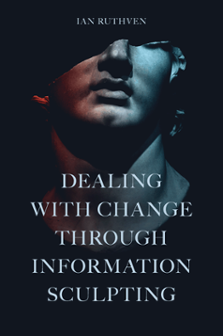Identify formation of gay
, 146
Identity
, 189–190
construction
, 103
creation
, 17
formation
, 143
perspective on work responsibility changes
, 103–104
Illness uncertainty theory
, 53
Independent-Skeptical patients
, 119
Information behaviour
, 2, 29–30
enacting
, 47
engaging
, 45
establishing
, 48–49
event
, 43
initial information behaviour theory of transitions
, 42
Life After
, 49
Life Before
, 43
model
, 51
negotiating
, 45–46
resolving
, 47–48
theory of change
, 40–49
understanding
, 43–45
Information behaviour and change
information behaviour and information sculpting
, 72–75
information behaviour theory of transitions
, 73
information needs
, 70–72
information poverty
, 66–70
sense-making
, 58–61
uncertainty management
, 51–58
Information obtaining in prison
, 159–161
Information poverty
, 66–70
online interactions
, 69–70
small worlds and information barriers
, 68–69
Information professionals
, 13
Information Science
, 4–5, 57–58, 75, 115, 133, 151
Information sculpting
, 4–5, 29, 31, 173
Allard and Caidi’s translocal meaning-making
, 39–40
analogical mappings
, 32–35
creating information sculpting theory
, 36–40
crime and
, 170–171
cross-cutting themes
, 183–190
Ebaugh’s role exit theory
, 38
families and relationships and
, 94–95
final information behaviour theory of transitions
, 172
health and
, 129–130
information behaviour and
, 72–75
information behaviour theory of transitions augmented with behaviours
, 96
information search process
, 35–36
result of theory synthesis
, 40–41
sexuality and
, 151–152
Straus’ model of religious conversion
, 38
Sweeny’s crisis decision theory
, 37
transitions
, 175–182
Williams’ transitions cycle
, 39
work and
, 112–113
Young and Lockhart’s transition curve
, 39
Information Search Process
, 35–36
Information Seeking of Sexual Assault Survivors model (ISSAS model)
, 60–61
Information solution process
, 4
Information sources and behaviours
, 123–126
Information-coping trajectory
, 120
Intellectual-Researcher patients
, 119
Internet
, 23, 82, 121, 123–124, 140–141, 144–145
Interpersonal uncertainty
, 54–55
‘Interrelated uncertainty chains’
, 53
Intimate partner violence (IPV)
, 60, 167
